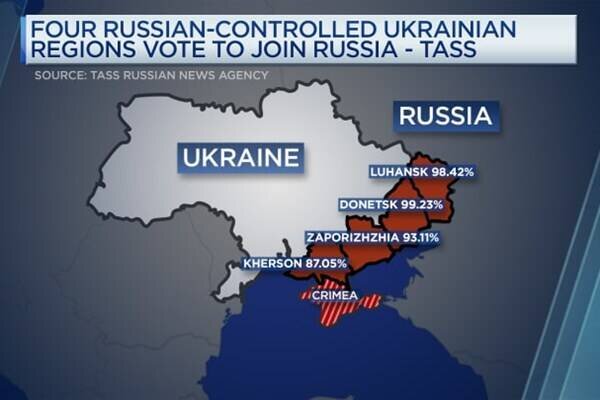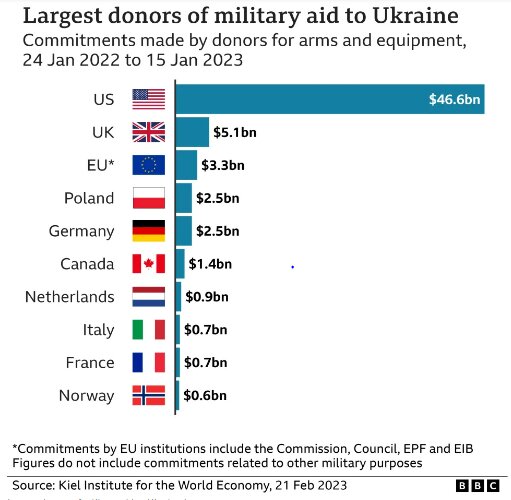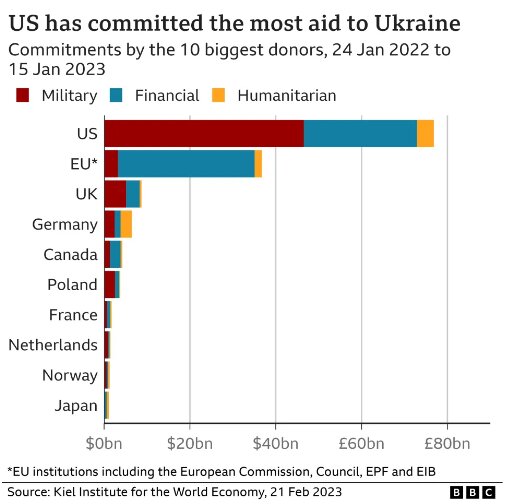Ukraine crisis anniversary; Why is the prospect of war still bleak?
Today, Friday, February 24, 2022, coincides with the first anniversary of Russia’s military operation against Ukraine; The operation, which actually had its roots in 2014 and the Crimean crisis, but contrary to predictions, entered the erosion phase.
About seven months after the start of the operation, on Friday, September 30, 2022, with the presence of the heads of the four regions of “Donetsk” and “Luhansk” in eastern Ukraine and “Kherson” and “Zaprogya” in the southeast of this country, the signing ceremony of the annexation documents of these regions took place in the Kremlin Palace. to the Russian Federation with the presence of “Vladimir Putin” and these regions, which made up about 15% of the territory of Ukraine, were officially annexed to the territory of Russia.

One year opportunity to send weapons
Since the beginning of the crisis, the West has sought to weaken Russia by arming and supporting the leaders of Kyiv, and the United States, by promoting the “Russia-phobia” project, had the opportunity to push other countries to buy their weapons in addition to Ukraine.
According to the “Council of Foreign Relations” think tank, Ukraine was the destination of 284 million dollars of American weapons in 2020. This country was in the sixth row after the Zionist regime, Afghanistan, Egypt, Iraq, and Jordan, but due to the war, Kyiv received about 22.9 billion dollars in military aid from the United States until November 20, 2022.
Joe Biden’s stance a few days ago during his trip to Ukraine also showed that America is trying to defuse the crisis. During a surprise visit to Kyiv, he announced that US military aid to Ukraine was nearly half a billion dollars more than the designated amount.
It should be noted that the US is the largest donor to Ukraine in terms of finances and weapons, and Congress allocated more than $112 billion (£92.47 billion) to the Eastern European country in 2022 alone.
Before Biden’s promise in Ukraine, the United States had helped Ukraine with nearly 80 billion dollars, of which about 46.6 billion dollars of this country’s commitments are military aid; Help that is much more than any other country. The United Kingdom ranks second with $5.1 billion in military aid, followed by the European Union with $3.3 billion. But this is only military aid. Other types of assistance are added to the cost.

Military aid pays for drones, tanks, missiles, and other munitions, as well as training, logistics, and intelligence support. Humanitarian aid and financial aid are surplus to that.
Humanitarian aid includes food aid, safe drinking water, medical equipment, and other necessities for Ukrainians displaced by the war. Financial assistance is provided in the form of salary payments to Ukrainian civil servants, healthcare workers, and educators.
workers, and educators.
As the chart below shows, military aid accounts for more than half of US spending in Ukraine, with $3.96 billion going to humanitarian aid and $26.73 billion to financial aid.
To summarize,
At first, the war in Ukraine did not seem to enter the erosive phase, but with its continuation and intensification, some equations changed completely. The calculation error of the West, in addition to Ukraine, also involved the European Union in the most severe crises, especially the energy crisis; The continent, which did not solve its strong need and dependence on Russian gas, entered into a full-scale conflict with Moscow. During this period, European countries suffered losses of nearly one trillion dollars due to the Russian energy embargo.
With the deepening of the crisis, the cold winter, and the unbridled inflation that was unprecedented in the past four decades took hold of the heads of Brussels and European citizens, and even the United States was not spared by the price hikes. Economic problems became the basis for the presence of thousands of Europeans and Americans in the streets, as well as nationwide strikes in the West. Contrary to America’s interest in selling weapons to the world and grain and energy to Europe, this war has been very costly for the actors of the green continent, and the countries of this continent host millions of Ukrainian refugees despite many problems.
The most important and at the same time the most worrisome part of the one-year crisis in Ukraine was the use of destructive weapons such as dirty and chemical bombs, and threats from both sides to use atomic bombs have worried the world and sounded the drum of World War III. This danger seems more serious when until now the doors of diplomacy are closed and in the absence of an effective and impartial mediator, the openings of hope for ending the crisis in Ukraine remain closed.









